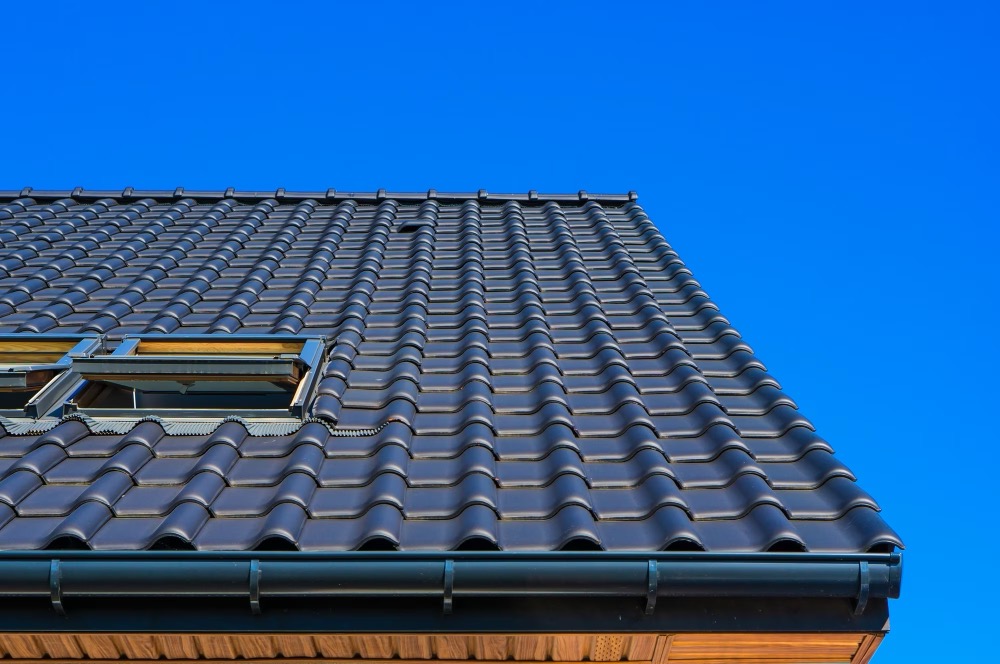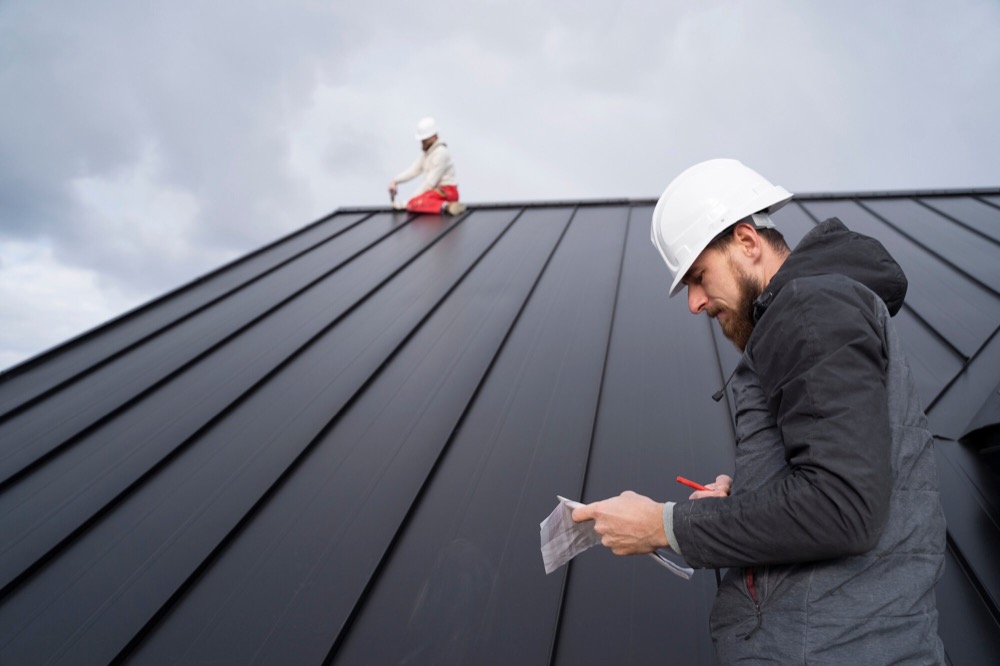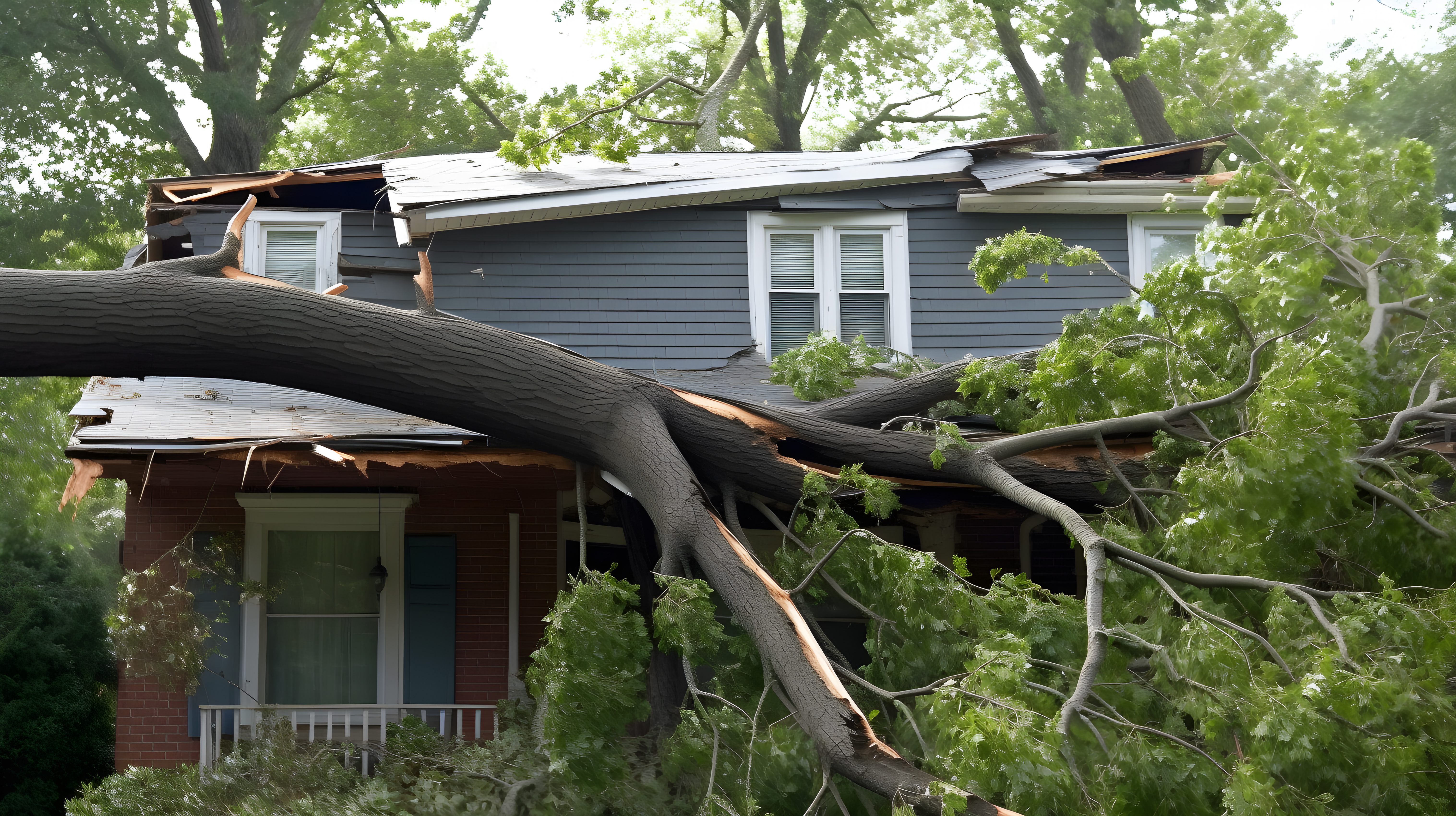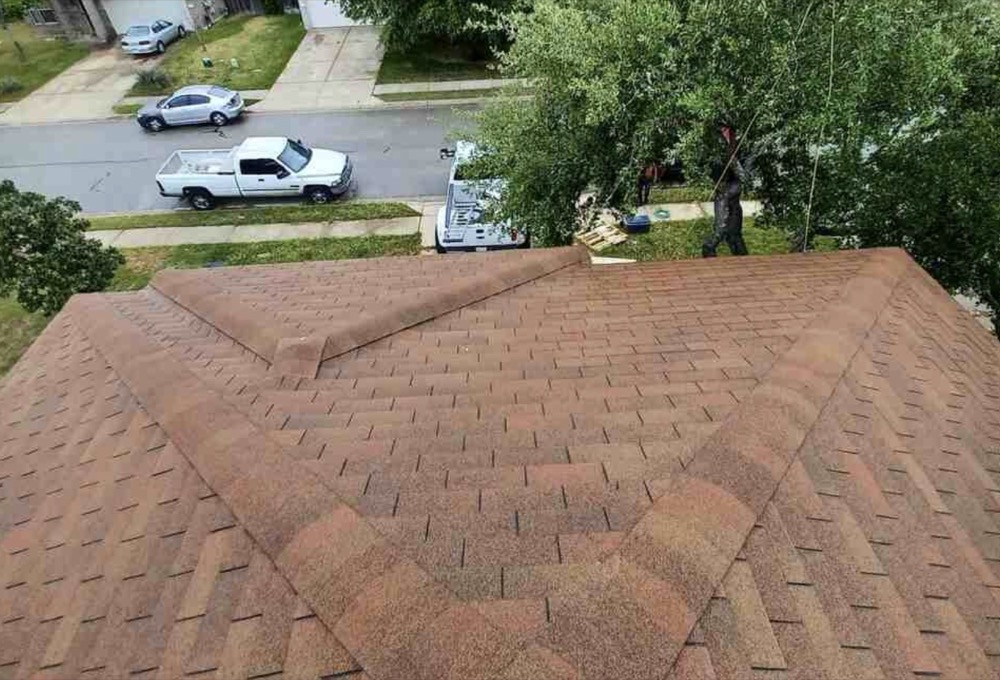Secure Your Home: Roofing Contractor's Guide for Rain Season 2024
Intro
As we gear up for the upcoming rain season in 2024, it's crucial for homeowners to ensure that their roofs are in top shape to withstand the elements. Hiring a reputable roofing contractor is essential to protect your home from leaks, water damage, and other issues that can arise during heavy rain. In this guide, we will walk you through the steps to secure your home and make sure your roof is ready for the rainy season ahead.
Understanding Your Roof's Role in Rainy Season Preparation
Your roof serves as the primary shield safeguarding your home from the relentless forces of nature, especially during the rain season. Its role transcends merely covering the top of your dwelling; it's about ensuring that water does not infiltrate your home, thereby preventing the myriad issues that can arise from unchecked moisture. With the rain season poised to test the resilience of your home, the integrity of your roof becomes paramount.
A well-maintained roof diverts water away from your home, channeling it through a systematic network of gutters and downspouts to avoid any potential water damage. This prevention of water entry is crucial, as the rainy season can exacerbate any existing vulnerabilities in your roofing system, leading to more significant issues like leaks, mold growth, and even structural damage over time.
It's not just about the immediate impacts; the longevity of your home is at stake. Water damage can lead to costly repairs and decrease the overall value of your property. Hence, ensuring that your roof is in optimal condition before the rain season arrives is an investment in the future of your home.
This preparation involves understanding the materials that comprise your roofing system and their respective lifespans. Different materials offer varying degrees of water resistance and durability, impacting how your roof performs under the stress of heavy rains. Being aware of the age and condition of your roof helps in anticipating potential problems before they arise, allowing for timely interventions that can avert costly repairs.
In essence, the role of your roof in rain season preparation is multifaceted. It is about protection, prevention, and preservation, acting as a critical barrier that keeps your home dry and secure, no matter what the weather brings.
Identifying Signs That Your Roof Needs Attention
Being vigilant about the condition of your roof is the first line of defense in preventing potential rain season disasters. Homeowners should conduct regular inspections, especially as the rain season approaches, to spot any early warning signs that could indicate your roof requires professional attention. Key indicators include:
**Missing or Damaged Shingles**: This is one of the most visible signs of roof wear and tear. Shingles that are cracked, bent, or completely missing expose your home to water infiltration. The presence of granules in your gutters is a tell-tale sign of shingle deterioration.
**Water Stains on Ceilings and Walls**: Stains or discolorations on interior ceilings and walls can be a clear indication of water seeping through the roof. These marks often signal a leak that, if left unaddressed, could lead to significant water damage inside your home.
**Sagging Roof Deck**: If parts of your roof appear to be sagging or if you notice pooling water, it’s a sign that the structural integrity of your roof may be compromised. This could be due to long-term water damage or inadequate initial installation.
**Moss and Algae Growth**: While moss and algae on the roof might seem merely cosmetic, they can be indicative of trapped moisture, which over time can damage roofing materials.
**Clogged or Damaged Gutters**: Though not a direct indicator of roof damage, gutters play a significant role in directing water away from your roof and home. Damaged or clogged gutters can lead to water backing up and seeping under roof shingles, causing damage.
Addressing these signs promptly can prevent minor issues from escalating into costly repairs. Engaging a professional roofing contractor for an in-depth inspection can provide a comprehensive assessment of your roof’s condition and recommend the necessary repairs or maintenance to ensure your home remains safe and dry through the rainy season.
Choosing the Right Roofing Contractor
Securing a roofing contractor who is both skilled and reliable is pivotal for safeguarding your home before the rain season begins. Embarking on this search may seem daunting, but focusing on a few key criteria can streamline the process and ensure you partner with a professional who meets your needs. Firstly, prioritize contractors with a robust presence in your locality, such as Austin, as they'll have a nuanced understanding of weather patterns and roofing challenges specific to the area. Local contractors are more accessible for follow-up services or if urgent issues arise post-repair or installation.
Secondly, licensing and insurance are non-negotiable. A licensed roofing contractor adheres to the industry standards and possesses the requisite knowledge and expertise. Insurance, on the other hand, protects you from liability in the event of accidents or damage to your property during the project. Don't hesitate to ask for proof of both to verify the contractor's credentials.
Another critical step is examining past work and references. A reputable contractor will have a portfolio of completed projects and should be willing to provide references. Contacting previous clients or reading online reviews offers insights into the contractor’s work ethic, timeliness, and communication style. Look for patterns in feedback that speak to the contractor’s reliability and quality of work.
Lastly, clear communication from the outset sets the tone for a successful project. A professional contractor will conduct a thorough inspection of your roof, explain the necessary work in understandable terms, and provide a detailed, written estimate. Transparent discussions about timelines, materials, and costs help manage expectations and avoid surprises.
Choosing the right roofing contractor is a critical decision that requires thoughtful consideration. By focusing on local expertise, verifying licensing and insurance, scrutinizing past work, and prioritizing clear communication, you can select a professional who will ensure your roof is ready for the rain season of 2024, safeguarding your home against the elements.
The Importance of Timely Roof Inspections
Conducting timely roof inspections is a crucial component in maintaining the integrity of your roofing system, especially as we approach the rain season of 2024. It's not just about identifying current issues; it's about preempting potential problems that could lead to significant damage. A professional roof inspection can uncover hidden damages such as minor leaks, areas of wear and tear, and other signs of deterioration that might not be visible to the untrained eye. These inspections are vital for creating a baseline understanding of your roof's condition and for planning any necessary maintenance or repairs before they escalate into more severe, costly issues.
A thorough inspection by a qualified roofing contractor goes beyond a simple visual check. It includes assessing the roof structure, checking for proper ventilation, inspecting the condition of roofing materials, and ensuring the gutters and downspouts are clear and functional. This comprehensive approach is critical in mitigating the risk of water damage, structural issues, and mold growth, all of which are common concerns during the rain season.
Moreover, timely inspections provide an opportunity to enhance the longevity of your roof. By addressing minor repairs early, you can avoid premature roof failure and extend the life expectancy of your roofing system. This proactive strategy not only saves you money in the long run but also ensures that your home remains safe and protected against the challenges of the rain season.
Remember, the goal of a roof inspection is not just to identify problems but to ensure that your home remains a safe haven, impervious to the weather elements. Engaging a professional roofing contractor for a pre-rain season inspection is a smart move that can lead to significant savings and peace of mind, ensuring that when the rain comes, your home stands ready to face it head-on.
Roof Repair vs. Replacement: Making the Right Decision
Deciding between roof repair and a complete roof replacement requires a careful evaluation of your roof’s condition and thoughtful consideration of long-term outcomes. This decision can significantly impact both the protection of your home and your financial budget. A professional roofing contractor plays a critical role in this process, offering expert assessments based on the severity of roof damage, the age of your roof, and the cost implications of each option.
For roofs showing minor, localized damage, such as a few missing shingles or small leaks, repair might be the most cost-effective solution. These issues can often be resolved quickly, restoring the integrity of your roof without the need for a full replacement. Repairing your roof at the first sign of trouble can extend its lifespan and delay the need for more substantial investments.
However, when damage is widespread, severe, or the roof is nearing the end of its expected lifespan, replacement may be the more prudent choice. A new roof can provide peace of mind, enhanced protection against the elements, and improve your home’s energy efficiency and aesthetic appeal. Additionally, it eliminates the ongoing costs and hassles associated with patching recurring problems.
Factors such as the material of your current roof, the climate in your area, and future plans for your home should also influence your decision. If you're planning to stay in your home long-term, investing in a new roof could offer greater benefits and value. Conversely, if your plans are uncertain, a detailed consultation with your roofing contractor can help weigh the immediate costs against potential long-term gains or savings.
Ultimately, the choice between repair and replacement should be made after a thorough inspection by a trusted roofing professional. They can provide detailed insights into the condition of your roof and recommend the most appropriate, cost-effective solution tailored to your specific situation and needs.
Preparing Your Home for Roofing Work
Getting your home ready for roofing repairs or replacement is an essential step to ensure the work goes smoothly and safely. The process begins by clearing the attic or any areas directly under the roof. This not only protects your belongings from dust and debris but also gives roofing contractors clear access to the roof from the inside, if necessary. Items stored in the attic should be covered with tarps or moved to a safe location during the roofing process.
Next, consider the safety and comfort of your pets. The noise and presence of strangers can be stressful for animals, so you might want to arrange for them to stay with a friend or at a pet daycare center on the days the work is scheduled.
Additionally, be mindful of parking arrangements. Roofing contractors will need easy access to their tools and materials, often requiring close proximity to your home. Providing clear instructions on where to park can help avoid any confusion and ensure a smooth operation. It's also wise to move your own vehicles to a safe distance to prevent accidental damage from falling debris.
Prepare your property by securing or removing any loose items in your yard that could be damaged or could hinder the roofing process. This includes patio furniture, potted plants, and outdoor decorations. Contractors will need ample space to work and to store materials, so clearing the perimeter of your house can facilitate a more efficient workflow.
Lastly, inform your neighbors about the upcoming roofing work. This courteous step helps manage expectations and minimizes any potential disruptions. Roofing projects can be noisy and may affect those living close by, so giving a heads-up is always appreciated.
By taking these preparatory steps, you can create a conducive environment for roofing contractors to work efficiently, ensuring that your home’s roofing project progresses smoothly and without unnecessary delays.
Post-Repair Maintenance: Keeping Your Roof in Top Shape
Maintaining the longevity and effectiveness of your roof after repairs or a complete replacement is critical for ensuring it continues to protect your home against the elements. Regular maintenance is not only about preserving the aesthetic appeal but also about reinforcing your home’s first line of defense against the rain season. Begin by scheduling semi-annual inspections, ideally during the spring and fall, to identify any minor issues before they escalate into major concerns. These inspections should focus on checking for loose or missing shingles, sealing cracks, and ensuring flashing is securely in place around chimneys, vents, and other roof penetrations.
Gutter maintenance cannot be overstated; ensure they are free of debris to prevent water from pooling on your roof, which can lead to leaks and water damage. Installing gutter guards can be a worthwhile investment to minimize maintenance requirements and enhance the efficiency of your water diversion system.
Promptly addressing any damage is crucial. Even small issues, if ignored, can compromise the integrity of your roofing system. After significant weather events, an additional inspection is advisable to assess any potential storm damage.
Additionally, maintaining clear ventilation pathways is essential to avoid moisture buildup in your attic, which can weaken your roof structure over time. Make sure attic vents are unobstructed to promote adequate airflow, preventing heat and moisture from accumulating and causing rafters or sheathing to rot.
Lastly, keep trees around your home trimmed to prevent branches from rubbing against your roof and potentially causing damage or depositing debris in your gutters. This proactive approach not only safeguards the structural integrity of your roof but also prolongs its lifespan, ensuring it remains in optimal condition to withstand future rain seasons.
Navigating Roofing Warranties and Insurance Claims
Navigating the complexities of roofing warranties and insurance claims can often feel daunting, but it's a crucial step in ensuring your home's protection is maximized following repair or replacement work. Roofing warranties typically cover materials and workmanship for a set period. It's essential to understand the specifics of your warranty, including what is covered and for how long, as well as any actions that could inadvertently void it. Keep all warranty documentation in a safe place, and don't hesitate to reach out to your roofing contractor for clarification on any warranty-related questions.
When it comes to insurance claims, the process usually begins with documenting the damage. Take clear photos or videos to provide evidence of the issue. It's advisable to review your homeowners' insurance policy in detail to understand what types of roof damage are covered and under what circumstances. Some policies may only cover damage resulting from specific events, like natural disasters, and may have stipulations regarding the age of the roof at the time of damage.
Filing an insurance claim involves submitting the evidence of damage along with a detailed report from your roofing contractor outlining the needed repairs or replacement. The insurance company may send an adjuster to inspect the damage further. Having a roofing contractor who is experienced in dealing with insurance claims can be invaluable during this process. They can provide the necessary documentation, advocate on your behalf, and ensure that the scope of work aligns with what is needed to properly repair or replace your roof.
Patience is key, as the claims process can be time-consuming. Stay organized by keeping records of all communications with your insurance company and contractor. This proactive approach can help streamline the process, ensuring you receive the coverage you're entitled to without unnecessary delays.
DIY Roofing Repair: Pros and Cons
Embarking on a DIY roofing repair project might initially seem like a cost-effective solution to address minor roofing issues. The allure of saving money on labor costs and the sense of personal accomplishment from fixing your own home are significant advantages. However, the potential drawbacks of this approach cannot be overlooked.
Firstly, the risk of personal injury should be a major concern for any homeowner considering DIY roof repairs. Roofing work involves working at heights, requiring specialized equipment and safety protocols to prevent falls or accidents. Without proper training and equipment, the risk of falls increases dramatically.
Additionally, the quality of DIY repairs is often inferior to that of professional work. Roofing contractors bring years of experience, specialized tools, and a deep understanding of roofing materials and techniques that most homeowners simply do not possess. Incorrectly performed repairs can lead to further damage, necessitating more extensive and expensive repairs in the future. Moreover, DIY repairs may not address the root cause of the roofing issue, leading to recurring problems.
Another consideration is the impact on warranties. Many roofing materials come with warranties that could be voided if repairs are not performed by a certified professional. This means that any future problems might not be covered, leading to higher out-of-pocket costs for the homeowner.
The Role of Gutters and Drainage Systems in Roof Health
Gutters and drainage systems are often the unsung heroes when it comes to preserving the health and integrity of your roof. Their primary function is to direct rainwater away from the foundation of your home, but their impact on the roof's condition is equally critical. A well-maintained gutter system prevents water from pooling on your roof, which can cause leaks, mold growth, and weaken the structural components of your roofing system over time.
Ensuring that your gutters and downspouts are free of debris is a vital aspect of roof maintenance. Leaves, twigs, and other materials can accumulate in your gutters, leading to clogs that obstruct the flow of water. This obstruction not only risks damage to the roof but can also result in water overflowing and seeping into the foundation of your home, potentially causing extensive damage.
Moreover, the installation of gutter guards is a proactive measure homeowners can take to mitigate the need for frequent cleanings. These guards prevent debris from entering the gutter in the first place, ensuring a smooth flow of water away from your roof and home. However, it's important to choose the right type of gutter guard and to ensure they are installed correctly, as poorly fitted guards can exacerbate roofing problems.
Additionally, the alignment and slope of gutters and downspouts are crucial for effective water diversion. They should be designed to carry water efficiently away from your home, minimizing any chance of pooling or backflow that could compromise your roof's integrity. Regular inspections can help identify and correct any issues with the gutter system's alignment or functionality.
In essence, the health of your roof significantly depends on the proper functioning of your gutters and drainage systems. Regular maintenance and timely repairs of these components are essential steps in safeguarding your home from the potentially devastating effects of water damage, particularly in anticipation of the rain season. By keeping gutters clean and ensuring the drainage system is operating efficiently, you contribute greatly to the overall longevity and effectiveness of your roofing system.
‹ Back









